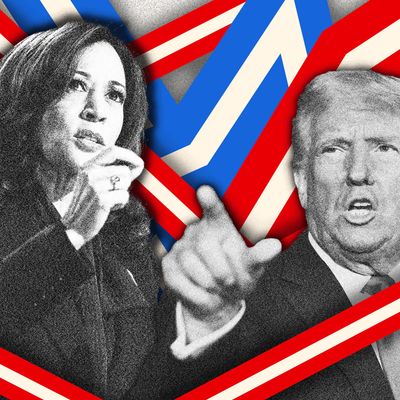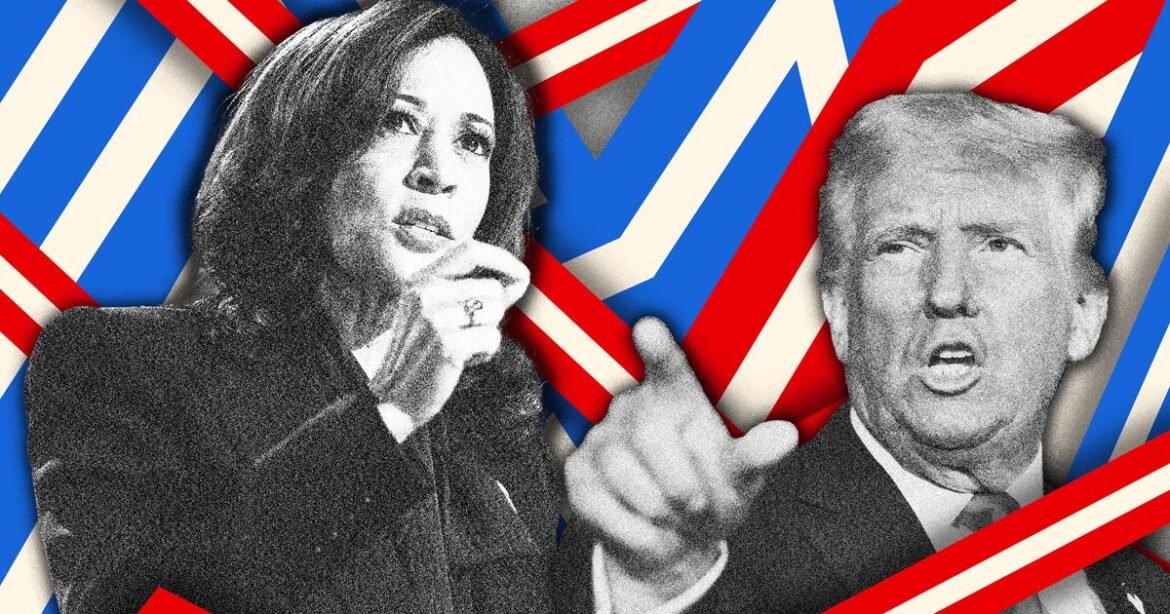
Photo-Illustration: Intelligencer; Photos: Getty Images
The big question political observers have been asking this week is whether Kamala Harris would get a polling “bounce” from what by all accounts was a pretty successful Democratic National Convention. There’s now enough post-convention polling data in to at least assess that proposition, and the best answer is that if there’s a “bounce,” it’s modest.
One problem is that hardly any public pollsters went into the field just before or just after the DNC. Morning Consult’s tracking poll is a good source of trend data, and it had Harris leading Trump by an identical four-point margin (48 to 44 percent) the week before and the week of the convention. YouGov/Economist showed Harris leading Trump by three points (46 to 43 percent) in an August 17–20 survey and by 2 percent (47 to 45 percent) in an August 25–27 poll. In the FiveThirtyEight national polling averages, Harris led Trump by 2.9 percent (46.7 to 43.8 percent) the day the confab in Chicago began and by 3.7 percent (47.3 to 43.6 percent) the day after it ended. She leads by 3.4 percent (47.1 to 43.7 percent) as of August 29. Some of the data feeding those averages, of course, was collected well before the results were released, so it could be a while before we can fully determine what happened to public opinion during and immediately after the DNC, but it’s worth noting that (a) convention bounces seem to have become smaller during the past few cycles (perhaps as a result of polarization) and (b) except in cases of big shifts, there’s no way to know if convention-week gains would have happened anyway and/or invisibly counteracted contrary trends.
Even if you conclude there was no significant “convention bounce” for Harris, a good argument can be made that her pre-convention surge was the functional equivalent, as Cook Political Report’s Amy Walter suggested: “Unlike any other election we have ever seen before, where the candidate really just came onto the scene less than a month before the convention, she got a lot of that bump before we even got to Chicago with the base then rallying around her.”
It’s also notable that something else happened in the presidential race the very day after the DNC: Robert F. Kennedy dropped his independent bid and endorsed Donald Trump. He had already been losing altitude in the polls all summer, so there weren’t a lot of Kennedy supporters left to “lend” to Trump, and given their low propensity to vote and strong hostility to both major parties, they might just stay home in November. But all we can say now is that this development doesn’t seem to have affected the major-party contest in any dramatic way. The very recent YouGov-Economist survey did show slight gains for Trump and for Jill Stein, but that could just represent statistical noise.
In any event, bounce or no bounce, this remains a very close presidential race both nationally and in the seven battleground states, and Kamala Harris is in a much better position that Joe Biden was for most of 2024. Nationally, her above-mentioned 3.4 percent lead is somewhat less than the national popular-vote margin (4.5 percent) won by Biden in 2020, and somewhat more than the margin (2.9 percent) that left Hillary Clinton achingly close to victory in 2016. Given all sorts of possible subterranean shifts in voting groups, you cannot extrapolate those numbers to 2024 and assume Harris needs to win by any particular percentage; let’s just say her national support looks sufficient for victory, though that’s hardly any sort of assurance.
In the battlegrounds where the race will be decided, every state is definitely in play. According to the FiveThirtyEight averages, Harris actually leads in six of the seven: by 0.1 percent in Arizona (45.4 to 45.3 percent); by 0.4 percent (46.5 to 46.1 percent) in Georgia; by 3.0 percent in Michigan (46.9 to 43.9 percent); by 1.2 percent (45.8 to 44.7 percent) in Nevada; by 1.3 percent (46.4 to 45.1 percent) in Pennsylvania; and by 2.7 percent (47. 4 to 44.7 percent) in Wisconsin. Trump leads by 0.5 percent (46.1 to 45.6 percent) in North Carolina. All of these leads are both fragile and even debatable: Nate Silver argues that the most recent polling from Pennsylvania doesn’t look as good for Harris as what we were seeing when he first became the nominee. And while there are multiple paths to 270 electoral votes for both candidates, the consensus is that Georgia (16 electoral votes) and Pennsylvania (19 electoral votes) are likely to be crucial.
As has been the case since Harris became the Democratic nominee, the performance of the two candidates with various subgroups of voters are beginning to look a lot more like those of 2016 and 2020 than what we were seeing with Biden in the race. The very latest high-quality national poll (from Quinnipiac) shows Harris leading among under-35 voters by 52 to 39 percent and among Black voters by 75 to 20 percent and the two candidates tied among Hispanic voters at 48 percent, with Harris leading overall by two points (49 to 47 percent). This is a likely-voter poll; other pollsters will be switching over from registered-voter to likely-voter polls in the weeks just ahead. Traditionally, this gives a boost to Republicans, but as with so many other issues in this surprising election year, that may or may not be the case with Harris (whose Democrats have become very enthusiastic) and Trump (who appeals to many marginal voters) as the contestants.

